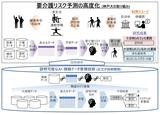Improving fault detection and isolation (FDI) in industrial networks using GCNN

Why are industrial networks important and how can we improve safety and efficiency?
Industrial networks of equipment are the backbone of resilient business operations. They are large-scale systems that consist of several interacting components. For example, water supply networks consist of connected components such as water tanks, pumps and pipes. Failure of any one component may disrupt the entire network, making it non-functional, and result in safety hazards and costly repairs. Thus, it is crucial to continuously monitor and maintain industrial networks to prevent any failure. Traditionally, monitoring such systems are focused on detecting faults on the level of a single component by considering the measurements generated by that component. These solutions are sub-optimal as they are independently applied to individual components without explicitly taking into consideration the dependency between the several components that co-exist in the network. Ignoring the interaction between components makes fault detection much more challenging. A fault in a component (say a leakage in a tank or a pipe) can affect the neighboring components. Therefore, designing a monitoring system without considering the network structure can degrade the diagnosis performance significantly. In order to solve this problem, my team and I looked at first modeling the industrial networks as weighted undirected graphs. The graph structure represents the connected components. We then used graph convolutional neural networks (GCNN) to detect and isolate faulty components in these systems. We applied our proposed method to a case study of a simulated water supply network and showed that GCNN outperforms traditional approaches for leakage detection.








